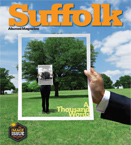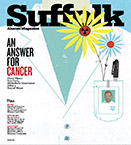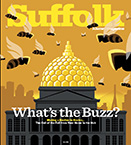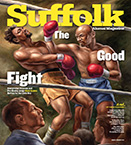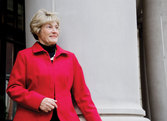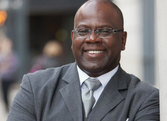The Good Fight
On April 15, William Evans got up at 5:00 a.m. to catch a bus to Hopkinton, Massachusetts, to run his 44th marathon — his 18th in Boston. Three hours and 34 minutes later, Evans, 54, crossed the finish line in Copley Square, cheered on by his wife and children.
He took his family back to their home in South Boston and was relaxing in the whirlpool of the Boston Athletic Club when a patrolman told him that two bombs had exploded at the marathon. Within 30 minutes, Evans, a 32-year veteran of the Boston Police Department and its current superintendent, was back in Copley Square.
“An hour earlier, there was so much excitement on the street, and then to go back in my official position, and to see what I had witnessed, it was just like, ‘This can’t be happening,’” he recalls. “There were sights that I hope no one ever has to see. It really hit home. We were attacked.” At the scene, three people had been killed and more than 250 injured.
Working with state police, the FBI, and the ATF, Evans and his officers shut down the city’s largest-ever crime scene and began the investigation. “The next time I went home,” he says, “was 10:00 p.m. the next night.”
Two days later, at 4:30 a.m., Evans was at the Cathedral of the Holy Cross, preparing security for the interfaith service with President Obama and the First Lady. After their safe departure about 12 hours later, he returned to work the crime scene. Evans finally got into bed around 10:30 p.m. (Around this time, an M.I.T. police officer was shot to death in Cambridge by the alleged bombers.) Shortly after midnight, Evans got a call that shots had been fired in Watertown, and that the suspects—quickly determined to also be the alleged marathon bombers—were throwing pipe bombs at his officers in an attempt to escape. Evans rushed to a makeshift command center in Watertown, where he took charge of his officers, who, with one suspect down, were searching for the other, who had fled.
By 6:00 p.m., Massachusetts Gov. Deval Patrick had lifted the shelter-in-place directive he’d ordered for Watertown and nearby cities and towns that morning, but Evans wasn’t ready to call it quits with the search. “We weren’t confident that we had finished our job,” he explains. “We took this very personally. This was our city, our marathon, so we continued to search after other agencies called it a day.”
Evans followed a Watertown officer who had received a call about a resident who reported someone hiding in a boat behind his house. They were the first to arrive at the home, and Evans called for a tactical team.
“At some point, when we were organizing out front, a shot rang out. We didn’t know if the shot came from inside the boat or [from] one of the officers, and I started yelling for everyone to hold their fire. I got everyone to calm down at that point. The FBI hostage recovery team came in, and working together with them, every decision they made, they ran by me as the incident commander.” Working with a state police helicopter and the FBI hostage recovery team, Evans and his officers finally captured the suspect, Dzhokhar Tsarnaev.
“It was a busy week, but it all felt like one long day,” Evans reflects, noting that he and his officers were “lucky” if they got 10 hours of sleep the entire time. Yet to hear him tell it, the fatigue was eclipsed by the chance to make a difference. “It was a terrible, terrible tragedy. But I was happy to help bring some sense of closure, not just to the marathon and the city but for everyone who had been in fear.”
Evans’ service during the crisis gives new meaning to the phrase fighting “the good fight,” a common theme among the stories of the six individuals profiled in these pages. Attorney Herb Santos BA ’58, JD ’60, who fights on behalf of “the
little guy” in his practice, has also made a name for himself as a professional boxing judge (“Split Decision,” pg. 20). Caroline McHeffey BA ’13, Aaron Michael Lumnah ’14, and exchange student Mizuho Komatani ’16 brought a sense of altruism to a ritual known for hedonism, spring break (“Change Agents,” pg. 26). Javier Kinney JD ’04 has dedicated his career to serving California’s largest Indian tribe (“Road Warrior,” pg. 32), while Edmund Norton BS ’80, JD ’88 leads a program that has an innovative approach to reaching troubled youth (“Anchor Man,” pg. 38).
Never afraid to do battle for the public good; it’s become a hallmark of our alumni, including William Evans BS ’82, one of Boston’s—and Suffolk’s—finest.


